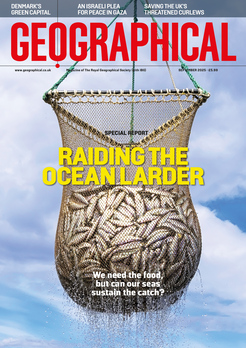
Rhino populations in Africa are rising despite continuing pressures from poachers
By
Good news concerning the environment can seem as rare as a dodo in today’s world. But every now and then there is a bit of positive news that can bring a glimmer of hope to conservationists. Such was the case in September when the IUCN (International Union for Conservation of Nature) announced that the population of both black and white rhinos in Africa had risen over the course of the past year.
According to the IUCN report, which was released to coincide with World Rhino Day on 22 September, the population of rhinos in Africa stood at an estimated 23,290 at the end of 2022. This represents an overall 5.2 per cent increase on 2021. Delving deeper into the figures there are now an estimated 6487 black rhinos, an increase of 4.2 per cent over 2021 and 16,803 white rhinos, which is an increase of 5.6 per cent over 2021, and is the first time the population of white rhinos has increased since 2012.
On announcing the news, Dr Michael Knight, chair of the IUCN African Rhino Specalist group (AfRSG) which was the organisation responsible for tallying the figures, sounded a note of optimism tinged with caution. He said: ‘With this good news, we can take a sigh of relief for the first time in a decade. However, it is imperative to further consolidate and build upon this positive development and not drop our guard.
And he has reason to be cautious because, despite the rising population, at least 561 rhinos were known to have been poached in Africa in 2022, which is actually an increase over the two preceding years.
Some 448 of these poaching incidents took place in South Africa (which is also home to the biggest overall population of rhino in Africa), which was a very slight decrease on 2021 when 451 rhino were killed.
In Kenya only one rhino was poached compared to six in 2021. But in Namibia, poaching had increased with 93 killed in 2022 compared to 47 in 2021. While the situation in Africa has improved on previous years the population today remains far below what it once was. At the start of the 20th Century there was thought to have been some 500,000 rhinos in Africa.
Although there is a bit of positivity about African rhino populations the same cannot be said about the rhinos of Asia.
Javan and Sumatran rhinos are in dire straits. Officially, there are 80 Sumatran rhinos left in the wild but experts fear the real figure might be closer to 34, spread over fragmented territory. While the Javan rhino population stands at 76 individuals, all of which live in just one national park. Meanwhile, the population of the one-horned rhino in India and Nepal remains stable at around 4,000 individuals.
For the rarest rhino of all though, you have to return to Kenya where only two northern white rhino, a sub-species of the white rhino, remain and they are both females.




